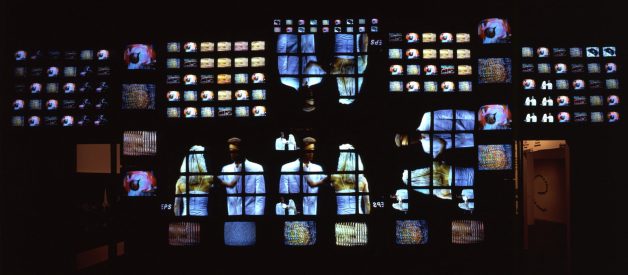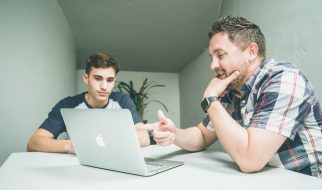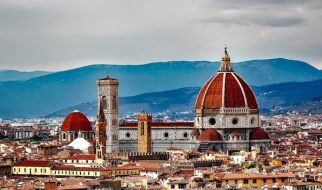 Tamiko Thiel, Unexpected Growth, 2018. Augmented reality installation commissioned by the Whitney Museum of American Art for the exhibition ?Programmed: Rules, Codes, and Choreographies in Art, 1965?2018,? Whitney Museum.
Tamiko Thiel, Unexpected Growth, 2018. Augmented reality installation commissioned by the Whitney Museum of American Art for the exhibition ?Programmed: Rules, Codes, and Choreographies in Art, 1965?2018,? Whitney Museum.
By Marie Chatel
?In theory, contemporary art institutions cover all kinds of contemporary art,? say Beryl Graham and Sarah Cook, ?but in practice, they don?t.? Digital art is complex to grasp, and many museums are still hesitant about its conservation and preservation. Despite this, they retain authority acting as what media artist Vuk ?osi? jokingly calls ?seals of approval.? While institutions provide one out of many contexts to experience digital art, their role in historicizing and discussing media-related critical discourses is not interchangeable because of the ensemble of publications, documentation, and collections they hold. Here is a list of 18 museums that shape the scene of digital art through their shows, commissions, acquisitions, and residencies, as well as the promotion of innovative methods of curation and new forms of display and interaction with the public.
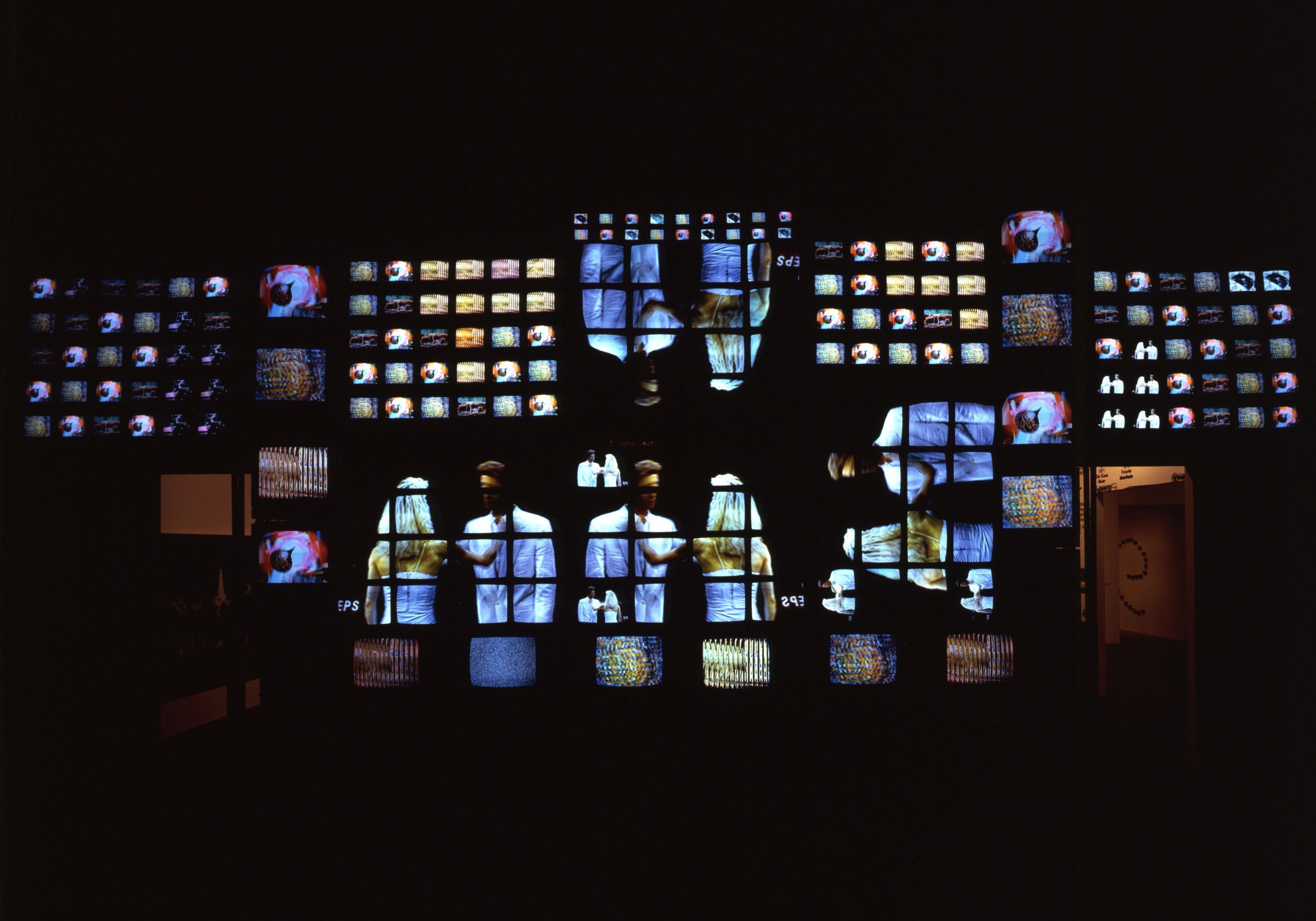 Nam June Paik, Fin de sicle II, 1989. The Whitney Museum restored the multi-channel video installation on the occasion of the exhibition ?Programmed,? running through April, 14th, Whitney Museum.
Nam June Paik, Fin de sicle II, 1989. The Whitney Museum restored the multi-channel video installation on the occasion of the exhibition ?Programmed,? running through April, 14th, Whitney Museum.
1. Whitney Museum of American Art (New York, US)
It is no coincidence the Whitney Museum is a leading agent of digital art. With media art emerging primarily in the US in the 1960s as part of collaborations between artists and tech companies, or science labs, the relation to American art is undoubtedly present. Under the guidance of Adjunct Curator of Digital Art, Christiane Paul, the Whitney now shows the indispensable exhibition Programmed: Rules, Codes, and Choreographies in Art, 1965?2018, a span over fifty years of linking current practices in coding and computation to conceptual art from the late sixties. This show follows a long legacy of exhibitions organized since the creation of its Artport in 2001 including BitStreams (2001), Data Dynamics (2001), CODeDOC (2002), Cory Arcangel: Pro Tools (2011). The Artport commissions net and new media artists for its online portal, including virtual exhibitions of Carla Gannis, Elisa Giardina Papa, and Lorna Mills, and artworks by Eva and Franco Mattes, Moreshin Allahyari, and artist duo Eteam. The collections are also sizable, presenting pieces of Addie Wagenknecht, Ian Cheng, John F. Simon Jr., Douglas Davis, Cory Arcangel, Jim Campbell, Nam June Paik, Casey Reas, Jacolby Satterwhite, Korakrit Arunondchai, Ccile B. Evans, and the list goes on.
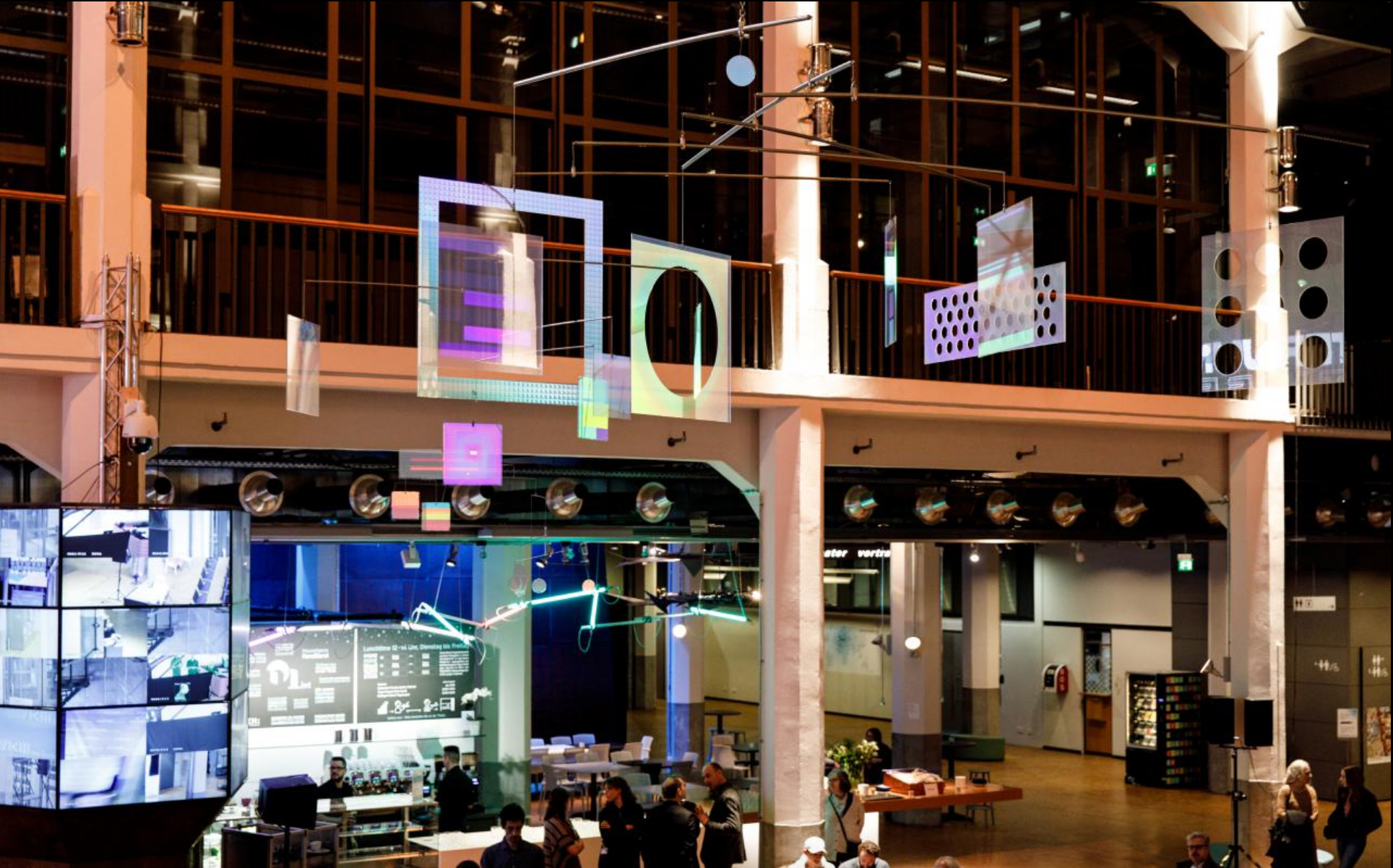 View of the exhibition dedicated to Dieter Jung on show at the ZKM, 2019, ZKM.
View of the exhibition dedicated to Dieter Jung on show at the ZKM, 2019, ZKM.
2. ZKM Center for Art and Media ( Karlsruhe, Germany)
Often referred to as the ?Electronic or Digital Art Bauhaus,? the ZKM captures the development of all media relevant to our digital age ? may it be through painting, photography, video, performances, installations, and other time-based creations. Thanks notably to the incredible work of curator Peter Weibel, the ZKM has provided with some of the earliest and most relevant exhibitions on digital art: net condition (1999), Ctrl [Space], Rhetorics of Surveillance from Bentham to Big Brother (2001?2), Future Cinema: The Cinematic Imaginary after Film (2002), Algorithmic Revolution. On the History of Interactive Art (2004), and The Algorithm of Manfred Mohr. 1963 ? now (2013). Ongoing exhibitions include Open Codes ? focusing on programming and the output of data through electronic devices like TV, smartphones, and computers ? and a solo show of Dieter Jung with concern for light and holography. The center also displays part of its permanent collection of media art built over thirty years and which contains works of Lynn Hershman Leeson, Bill Viola, Dennis Oppenheim, Nam June Paik, Paul Garrin, Marina Abramovi?, Masaki Fujihata, and Frank Fietzek, amongst others. On top of its role in curating, collecting, and preserving media works, the center houses artistic residencies, institutes, and laboratories to undertake scientific research, development, and production.
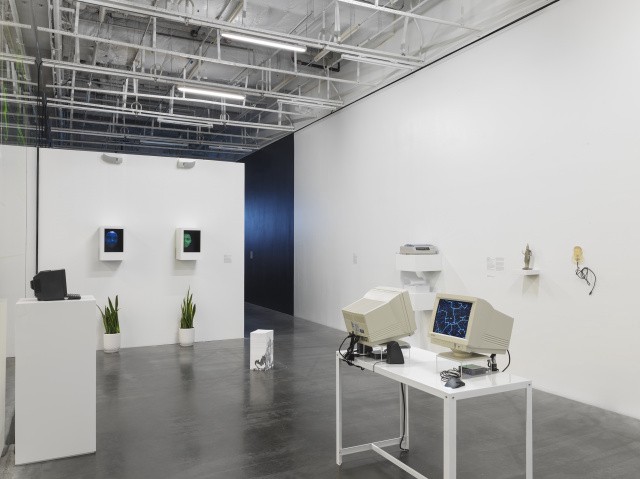 Exhibition view from ?The Art Happens Here: Net Art?s Archival Poetics,? The New Museum, through May, 26th, Rhizome and New Museum.
Exhibition view from ?The Art Happens Here: Net Art?s Archival Poetics,? The New Museum, through May, 26th, Rhizome and New Museum.
3. New Museum (New York, US)
With the mission to foster cross-cultural dialogue, respect, and mutual understanding, the New Museum is a central venue for contemporary art in New York. The museum?s taste for audacity, as well as its lasting interest for video art, makes internet and new media art obvious curatorial choices. After the show Open_Source_Art_Hack that Steve Dietz and Jenny Marketou curated in 2002 and solo exhibitions of video pioneers like Pipilotti Rist, the venue presents a new generation of artists working with computer-generated images such as Agnieszka Polska, Gregory Kalliche, and Eva Papamargariti, not to mention the CAD sculptures of Marguerite Humeau. The New Museum also leads New Inc, an incubator bringing together developments in art and technology to advance the creation of cultural values. Its key resident, the listserv Rhizome, affiliated since 2003, works on the collection, preservation and archiving of net art, a meticulous and unique project worldwide which clearly positions the New Museum. Through the 26th of May, the venue exhibits Rhizome-curated show The Art Happens Here: Net Art Archival Poetics, showcasing the early and emerging talents of web creation, among which Eduardo Kac, Olia Lialina, Alexei Shulgin, Shu Lea Cheang, and Morehshin Allahyari.
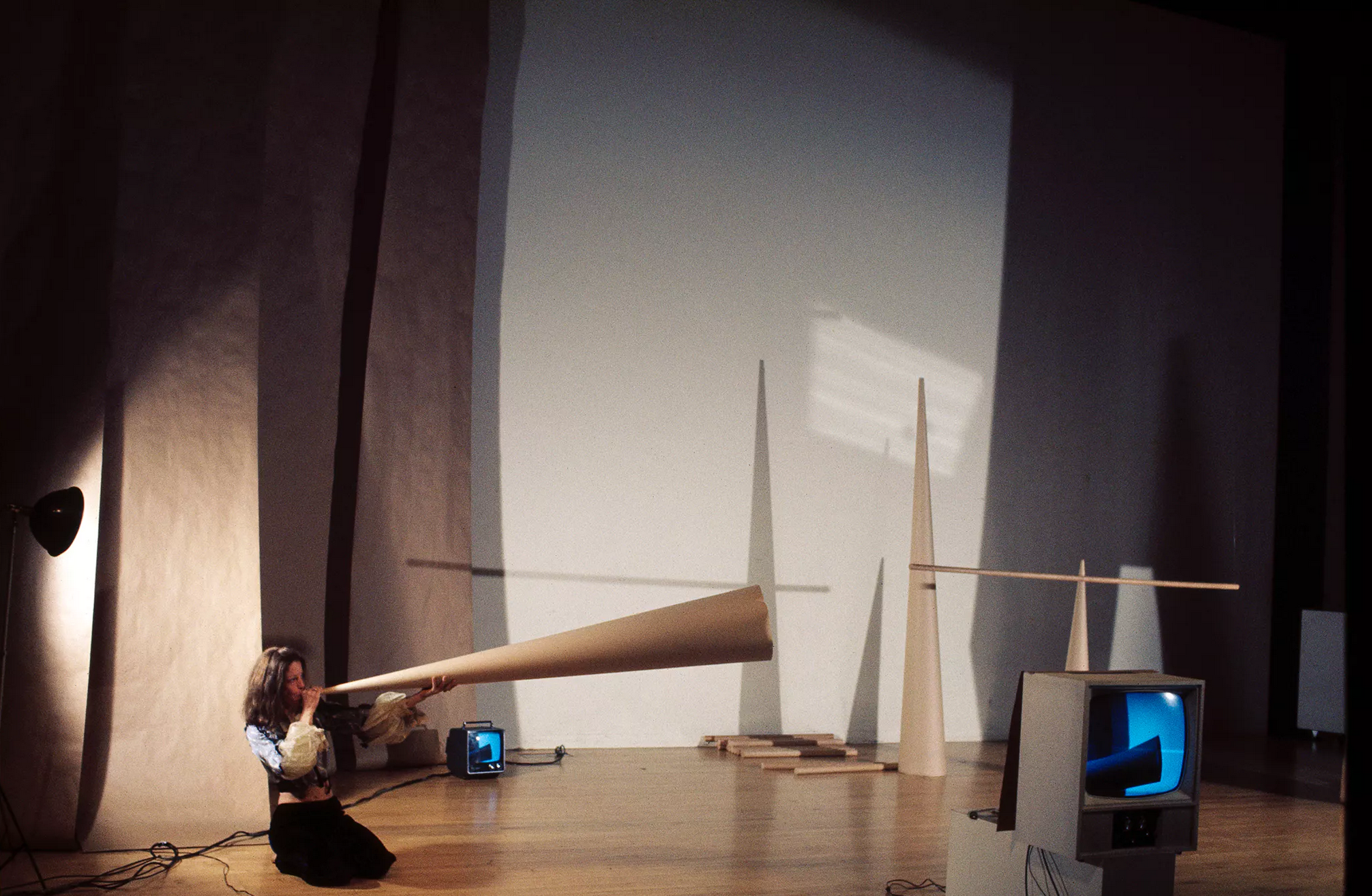 Joan Jonas, Funnel, Walker Art Center Auditorium, 1974. On the 30th of March, hear the discussion between video and performance art pioneer Joan Jonas and curator of the exhibition The Body Electric, Pavel Py?. Walker Art Center Archives.
Joan Jonas, Funnel, Walker Art Center Auditorium, 1974. On the 30th of March, hear the discussion between video and performance art pioneer Joan Jonas and curator of the exhibition The Body Electric, Pavel Py?. Walker Art Center Archives.
4. Walker Art Center (Minneapolis, US)
The Walker Art Center counts as one of the early players in the field of digital art, and this certainly has to do with Steve Dietz who curated new media at the institution between 1996 and 2003. Dietz notably organized some of the first online exhibitions such as Beyond Interface: net art and Art on the Net (1998) and Shock of the View: Artists, Audiences, and Museums in the Digital Age (1999). He also developed the traveling show Telematic Connections: The Virtual Embrace (2000?2002) and Translocations (2003). During this period the museum also founded the New Media Initiatives department, the online art Gallery 9, and the digital art study collection. The Walker Art Center now continues its strategy of collecting new media, proposing audience-oriented, engaging installations, and presenting solo shows of emerging visual artists. In 2017 the venue notably dedicated a show to Tokyo-based art collective teamLab where they proposed a virtual and immersive ecosystem for viewers to interact with unrealistic wildlife and plants. This term is also full of promises with exhibition The Body Electric launching on March 30th and which will feature works from Laurie Anderson, Ed Atkins, Trisha Baga, Zach Blas, Petra Cortright, Josh Kline, Wolf Vostell, and many others ? all reflecting on new media?s popular antagonisms between the real and the virtual, the organic and the artificial.
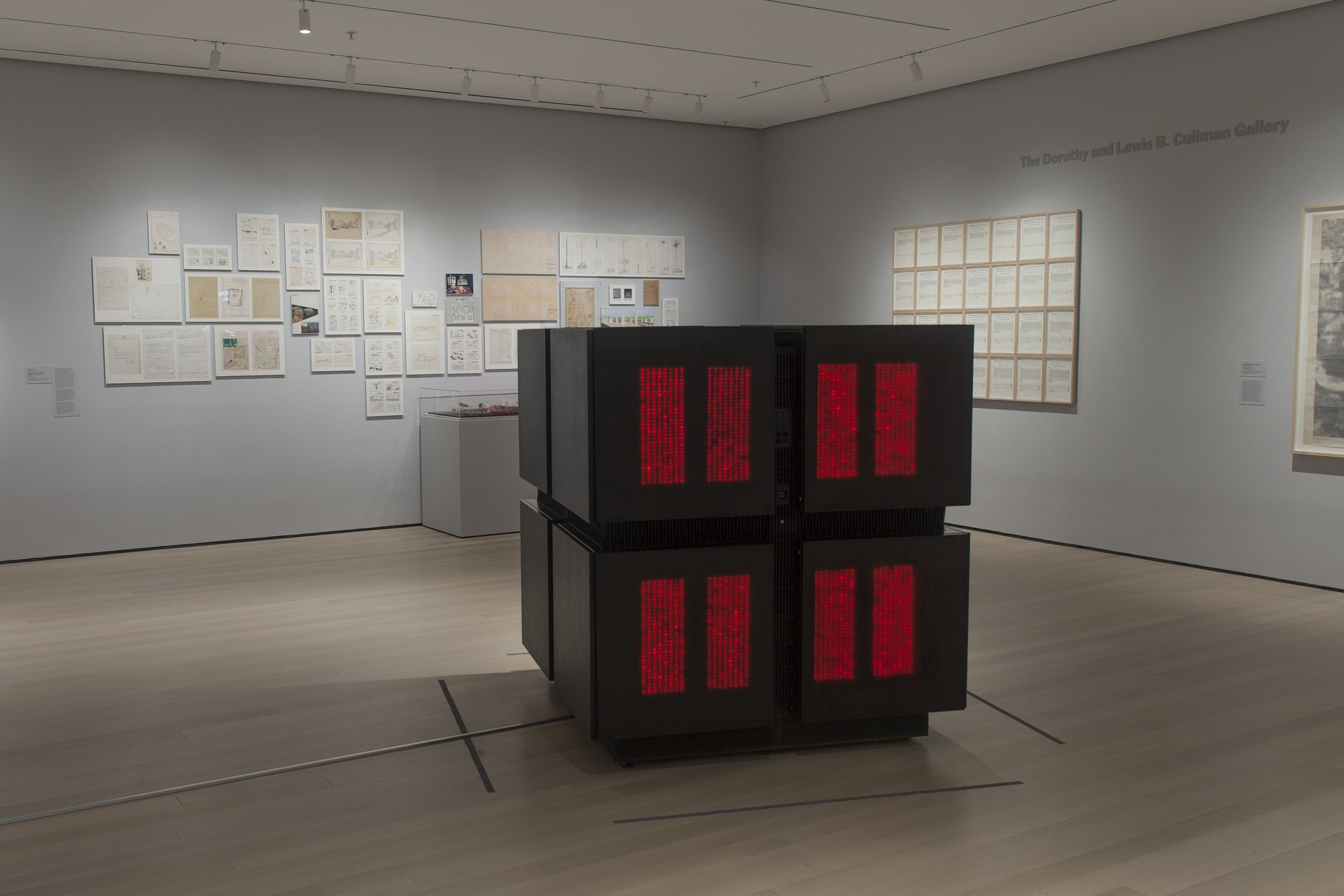 Installation view of Thinking Machines: Art and Design in the Computer Age, 1959?1989. The Museum of Modern Art, New York, 2018. MoMA and Peter Butler.
Installation view of Thinking Machines: Art and Design in the Computer Age, 1959?1989. The Museum of Modern Art, New York, 2018. MoMA and Peter Butler.
5. Museum of Modern Art and MoMA PS1 (New York, US)
It is in the 1960s that the MoMA started its pioneering collection of time-based art, followed in 2006 with the opening of a department dedicated to new media implementing specific exhibition modes and answering to the new preservation needs technology requires. After the exhibition Animations (2002), and Thinking Machines Art and Design in the Computer Age, 1959?1989 (2018), the museum will exhibit this spring (March 17th ? June 15th) a show on art and technology, reflecting on the interdependence between hardware and software, the physical and the immaterial. Its affiliated institution PS1 also contributes to the MoMA?s authority in digital art, notably through the solo show of artists like Cao Fei (2010) and the organization of co-curated events like the Hong Kong group exhibition .com/.cn, which examined the role of the web in the rapid advancements of global trade and information exchange. Funny enough, in 2010 the MoMA has also been the stage for developments in augmented reality as artists from the collective Manifest.AR ? Mark Swarek, John Craig Freeman, Will Pappenheimer, Tamiko Thiel, Sander Veenhof? hijacked the museum with their virtual installations, questioning the physical boundaries of traditional institutions with regards to the virtuality of digital art.
Curator Jasia Reichardt talks of the groundbreaking show Cybernetic Serendipity which happened in 1968 at the Institute of Contemporary Art, London, ICA.
6. Institute of Contemporary Art (London, UK)
Many things can be said about the ICA, but first and foremost in terms of new media, it is where the groundbreaking exhibition Cybernetic Serendipity took place in 1968. Curated by Jasia Reichardt, the show challenges the role of the artist as they elaborate their designs on cybernetic devices, resulting in computer-generated music, graphics, texts or poems. As its director Stefan Kalmr points out, ?The ICA was created as an institute (not a museum), for the contemporary (not just modern) and for all the arts (not just art)? ? which reflects perfectly well in the venue?s program and embrace of media arts, as well as its openness and curiosity for the new. These past few years the ICA has presented one show on forensic architecture, one on UK duo Metahaven, and another on Seth Price and the shift of emphasis from production to post-production, static presentation to circulation ? all connected to digital technologies. Now running is a solo exhibition by Scottish media artist Morag Keil who explores the impact of data-capitalism and digital technologies on people and their everyday realities.
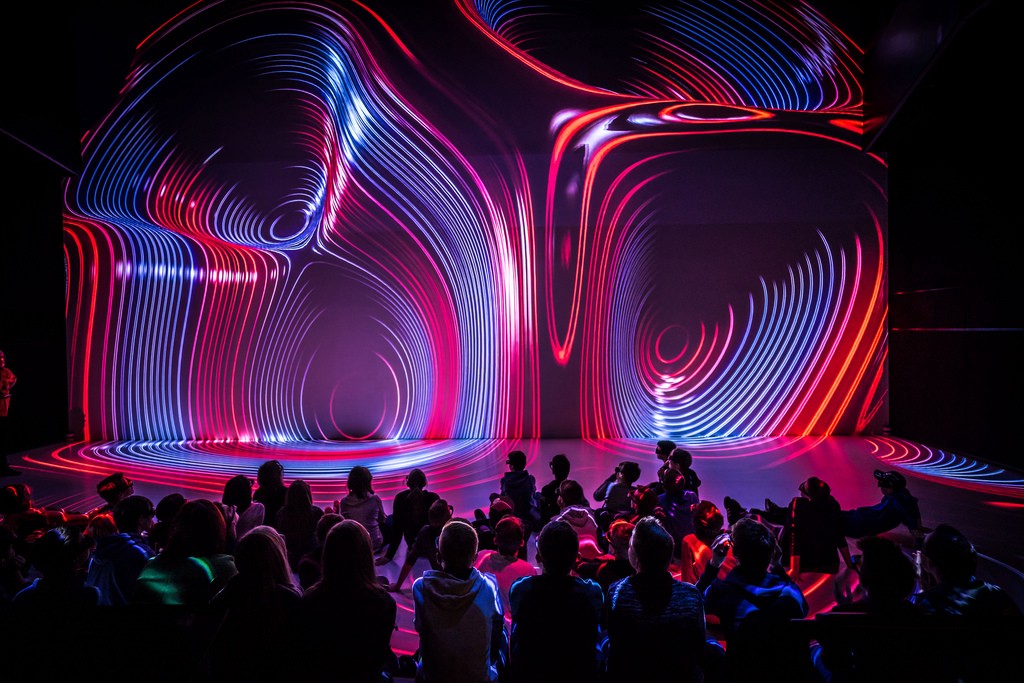 NOHlab, Prima Materia, 2017. Prima Materia is a stereoscopic piece taking the audience of the Ars Electronica Center?s Deep Space 8K on an audiovisual journey. Ars Electronica and Robert Bauernhansl.
NOHlab, Prima Materia, 2017. Prima Materia is a stereoscopic piece taking the audience of the Ars Electronica Center?s Deep Space 8K on an audiovisual journey. Ars Electronica and Robert Bauernhansl.
7. Ars Electronica Center (Linz, Austria)
Art, Technology, and Society ? three themes at the interlinkage of which lies Ars Electronica?s mission. Since 1979, the center has worked as a ?Museum of the Future? allowing innovative ideas to circulate. Subjects include the blend of media art with scientific domains like artificial intelligence, biotechnology, genetic engineering, neurology, robotics, and prosthetics. No ?do not touch? signs here, this institution promotes places of interaction and participation where visitors experiment with their surroundings and infer what life could look like in the near future. Rather than highlighting the work of particular artists, the venue proposes a year-round presentation of art-science-technology, which is continuously adjusted to match research and the creation of knowledge. Ars Electronica also runs a festival, an international media art prize, and the FutureLab which all feedback into the content of its exhibition space. With its wall and floor 8K-resolution projections, laser tracking, and 3D animations, Deep Space 8 offers a cutting-edge immersive experience that all media artists dream to work with.
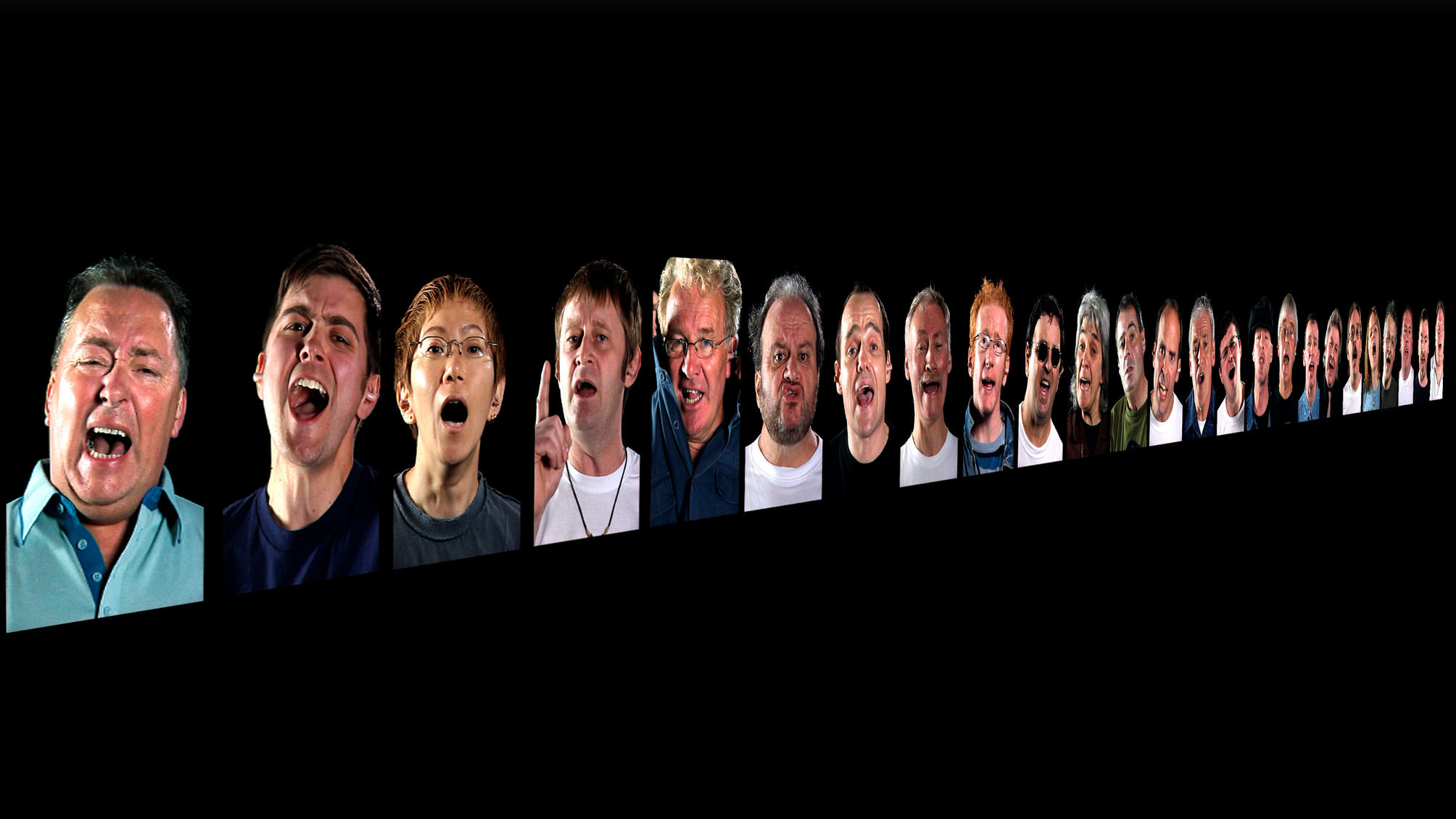 Candice Breitz, Working Class Hero (A Portrait of John Lennon), 2006. Permanent collection of the SFMOMA, Media Arts Department, SFMOMA.
Candice Breitz, Working Class Hero (A Portrait of John Lennon), 2006. Permanent collection of the SFMOMA, Media Arts Department, SFMOMA.
8. San Francisco Museum of Modern Art (San Francisco, US)
With San Francisco?s Bay Area as a cornerstone of technological innovation, its major museum for modern and contemporary creation, SFMoMA could not but look into media arts. Accordingly, in 1987 it was one of the first US museums to establish its Media Arts Department, which does show through in the incredible quality of its collection including works of Julia Scher, Nam June Paik, Douglas Gordon, Dan Graham, Peter Campus, Gary Hill, Tatsuo Miyajima, Candice Breitz, Tacita Dean, Anthony McCall, Jim Campbell, and Rafael Lozano-Hemmer. In line with its 2001 exhibition 010101: Art in Technological Times, the museum retains its prevalence as reminds the upcoming show snap+share: transmitting photographs from mail art to social networks which will explore the importance of internet and networks in the production and diffusion of images ? starting March 30th.
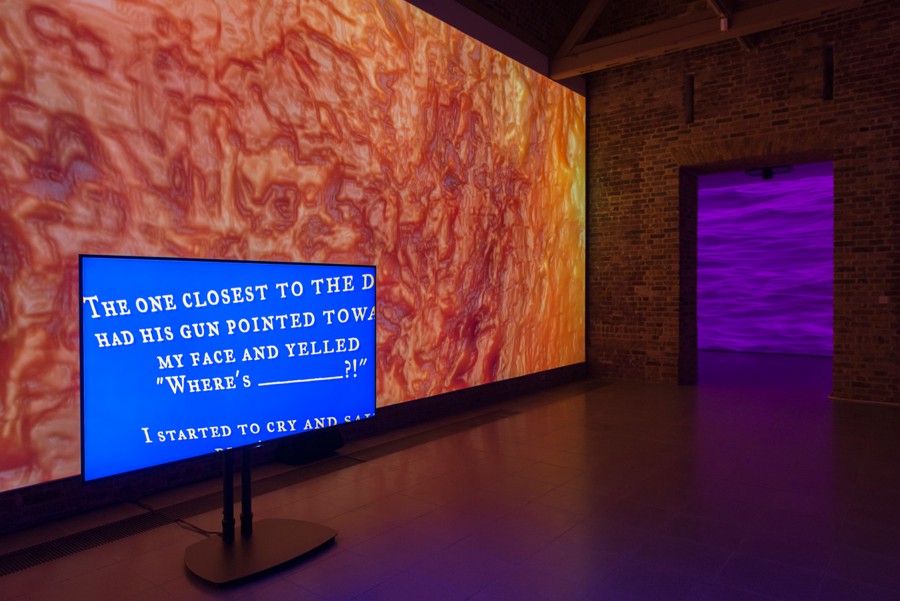 Sondra Perry, Typhoon coming on, 2018. Installation view, Serpentine Sackler Gallery, London, courtesy of the , Serpentine Sackler Gallery and Mike Din.
Sondra Perry, Typhoon coming on, 2018. Installation view, Serpentine Sackler Gallery, London, courtesy of the , Serpentine Sackler Gallery and Mike Din.
9. Serpentine Galleries (London, UK)
Its artistic director Hans Ulrich Obrist made it clear: ?At the Serpentine, we feel it?s time for new experiments in art and technology.? The Serpentine Galleries? program evolves to feature more and more new media, with specific interest for artificial intelligence and immersive technologies. Solo exhibitions from the likes of Pierre Huyghe, Ian Cheng, and Sondra Perry have made digital art a recurring theme of the venue ? a vision furthered last week with the presentation of Marina Abramovi??s The Life, the first performance to use Mixed Reality worldwide. The 19-minutes experience relied on Magic Leap?s latest, wearable technology which unlike Virtual Reality, allows visitors to remain visible when immersed in the art piece. With such an innovative approach to curating, we can?t wait to see what?s up next at the Serpentine!
 Installation view from SHIFT_CTRL: Computers, Games, and Art at the Beall Center for Art + Technology, University of California, Irvine, 2000, Beall Center.
Installation view from SHIFT_CTRL: Computers, Games, and Art at the Beall Center for Art + Technology, University of California, Irvine, 2000, Beall Center.
10. Beall Center for Art + Technology (Irvine, CA)
Affiliated with the University of California Irvine (UCI), the Beall Center for Art and Technology commits to the fostering of new relationships between art, science, and engineering, with obvious consideration for digital technologies and contemporary media arts. In 2000, its inaugural exhibition SHIFT_CTRL: Computers, Games, and Art curated by Antoinette Lafarge and Robert Nideffer broke grounds in analyzing gamings? relation to technology. Since then the center has shown continuous dedication to research, exhibitions, and public programs. Arguably important was the 2009 solo show on Nam June Paik?s later works from the 90s and after when he developed his body/robots. Other compelling exhibitions include Emergence: Art and Artificial Life (2010), DataViz: Information as Art (2013), as well as installations by Paul Vanouse, Golan Levin, Eddo Stern, and most lately R.Luke DuBois.
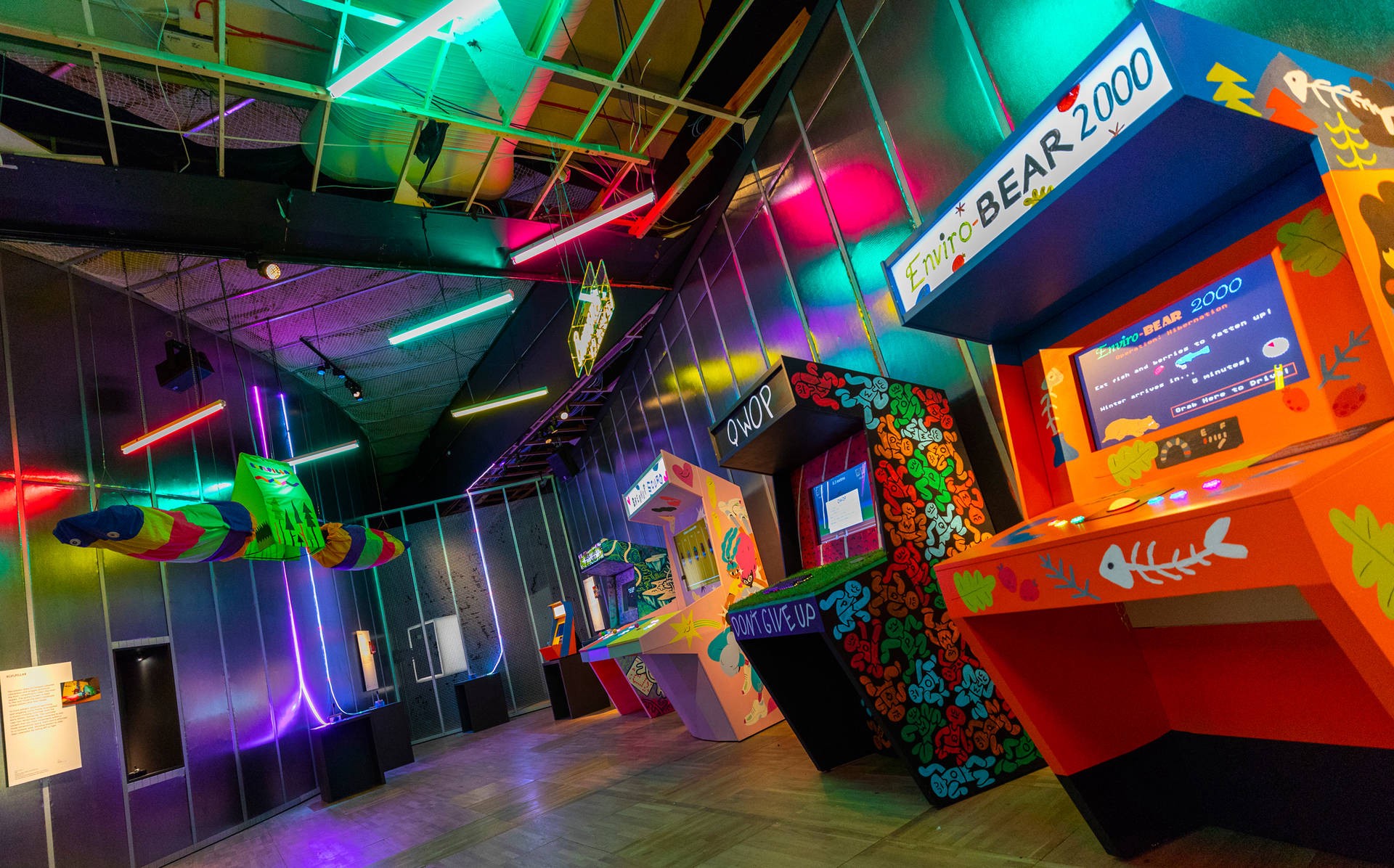 Installation view from Videogames: Design/Play/Disrupt at the Victoria & Albert Museum, London, 2018. V&A.
Installation view from Videogames: Design/Play/Disrupt at the Victoria & Albert Museum, London, 2018. V&A.
11. Victoria & Albert Museum (London, UK)
The V&A brings the most extensive collection in decorative arts and design worldwide, and it is only natural that the museum follows new ways of making art and design ? digitally. Its collections notably hold an excellent ensemble of computer artworks from the likes of Vera Molnar, Manfred Mohr, Mark Wilson, Georg Nees, and A. Michael Noll ? all shown in 2018 during ?Chance and Control: Art in the Age of Computers? which celebrated 50 years of computer-generated art. The museum also offers digital-focused residencies and organizes an annual Digital Design Weekend. On top of this, the V&A also heavily contributes to the appraisal of video games in art, as suggests its recent exhibition ?Videogames: Design/Play/Disrupt? (2018?9) that praised the field?s edge in immersion and interactivity.
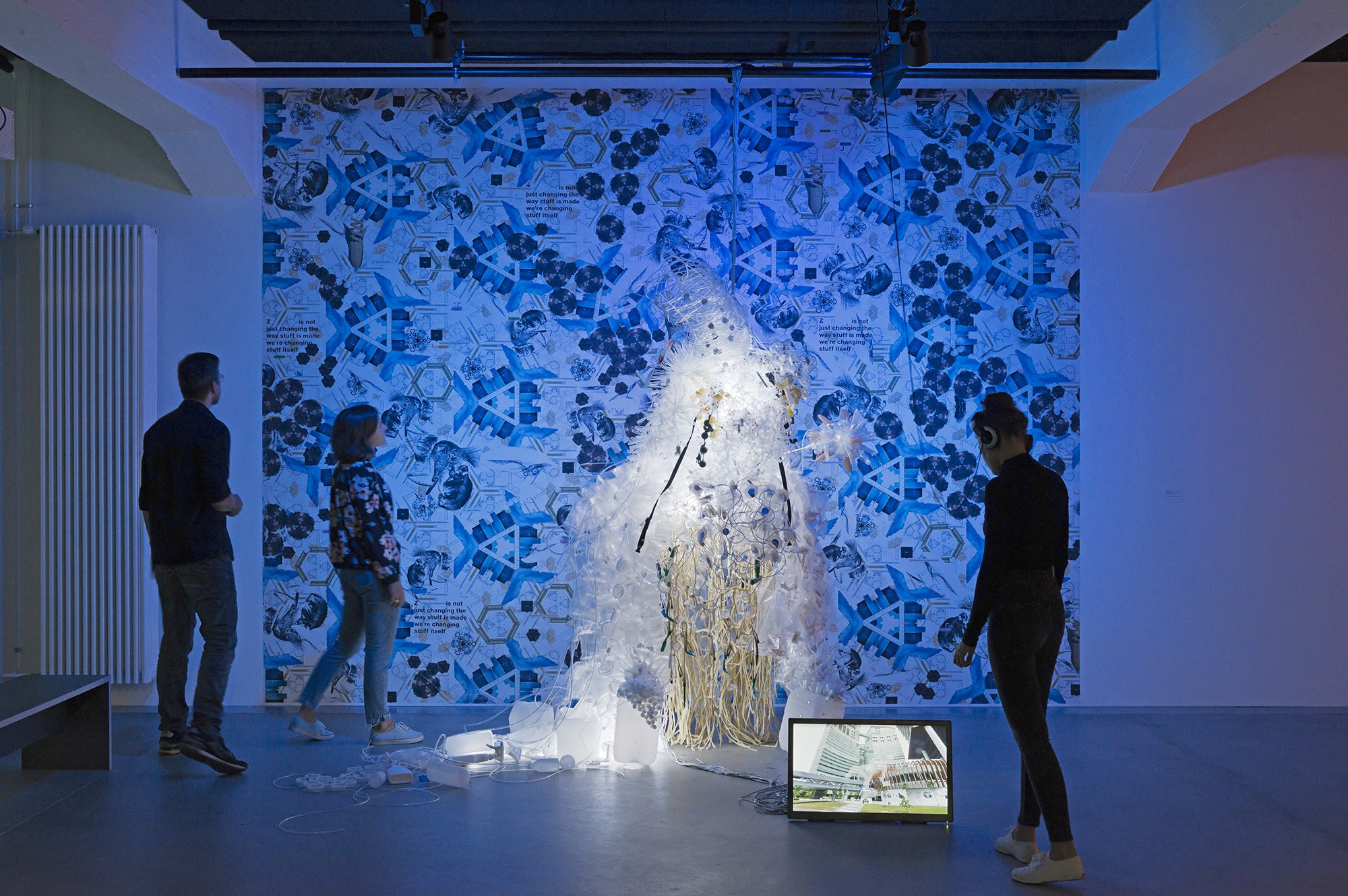 Genesis Machines, La Pompa Agricultura Transsubstantia, 2018. Installation view from Eco-Visionaries, HeK Basel, 2018, HeK.
Genesis Machines, La Pompa Agricultura Transsubstantia, 2018. Installation view from Eco-Visionaries, HeK Basel, 2018, HeK.
12. HeK, Haus der elektronischen Knste (Basel, Switzerland)
Digital videos, interactive installation, internet artworks, virtual reality, web game, computer animation or mixed media ? HeK is one fundamental institution specialized in digital culture and media technologies. The institution witnesses the creative and critical discourses that challenge the aesthetic, socio-political and economic framework through any new art forms indicative of the information age. Now running three solo shows on Swiss media art and winners of the 2018 Pax Art Awards !Mediengruppe Bitnik?, Fragmentin, and Lauren Huret, the venue ambitions to preserve and promote the works of Swiss media artists. Meanwhile, the HeK also engages in shows of international reach ? most recently, Eco-visionaries, co-organized with the Bildmuseet, the MAAT, and the Laboral Center for Art and Industrial Creation, revealed how artists use new media and technology to raise environmental issues.
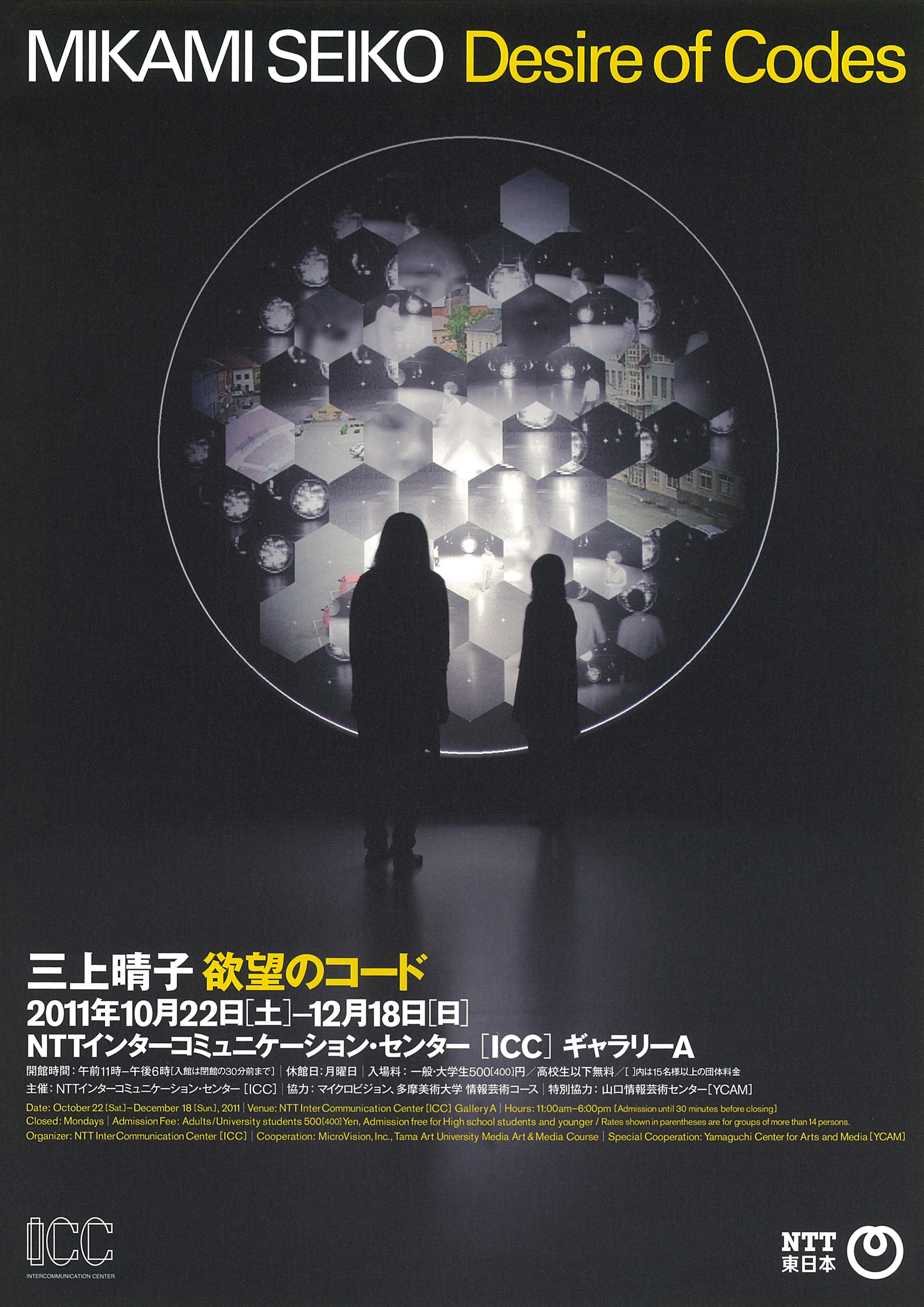 Poster of the exhibition Mikami Seiko Desire of Codes, on show at NTT InterCommunication Center in 2011, ICC.
Poster of the exhibition Mikami Seiko Desire of Codes, on show at NTT InterCommunication Center in 2011, ICC.
13. InterCommunication Center (Tokyo, Japan)
Founded in 1997 by Japanese telecommunication company NTT to celebrate the country?s 100th anniversary of telephony, the ICC acts as a central reference for new media arts. Toshiharu Itoh curated some of the earliest shows on digital technologies including, Portable Sacred Grounds: Telepresence World in 1998 and Digital Bauhaus in 1999. Now the center still proposes incredible content to connect science and technology with art, amongst which its series of solo show emergencies! which focuses on upcoming artists of the Asia-Pacific area, for instance, Yao Chung-Han, voice.zero, Higa Satoru, and Fujikura Asako. Other relevant exhibitions include E.A.T. ? The Story of Experiments in Art and Technology (2003), Extended Senses: Present of Japanese / Korean Media Art (2008), Coop Himmlb(l)au: Future Revisited (2009), Mikami Seiko Desire of Codes (2011). Now on view is Open Space 2018 which reviews artworks incorporating the latest, most cutting-edge technologies.
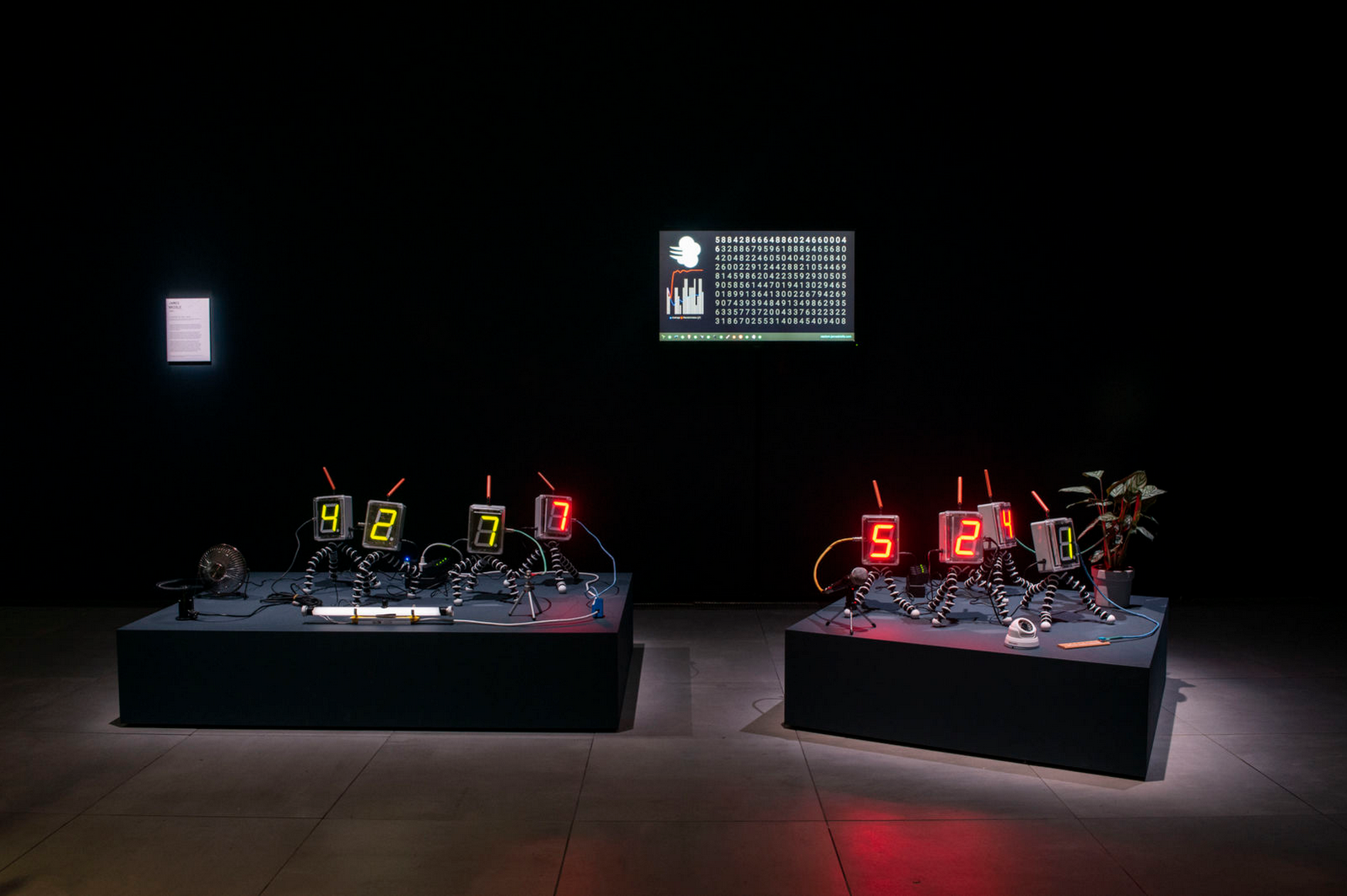 James Bridle, A State of Sin, 2018. Installation view from Broken Symmetries, running through March 3rd at FACT Liverpool. FACT and Jon Barraclough.
James Bridle, A State of Sin, 2018. Installation view from Broken Symmetries, running through March 3rd at FACT Liverpool. FACT and Jon Barraclough.
14. FACT (Liverpool, UK)
The Foundation for Art and Creative Technology supports international visual artists embracing the potential of new media and digital technology and is driven by empowering all 21st-century citizens with essential knowledge of their contemporaneity. Exhibitions cover existent subjects as exemplifies Time & Motion: Redefining Working Life (2014) or States of Play: Roleplay Reality (2018), an interactive exhibition that considers how the personification of avatars in video games impacts our perception of fiction and reality. In 15 years, FACT has commissioned and presented more than 350 digital artworks from artists like Isaac Julien, Pipilotti Rist, Nam June Paik, Krzysztof Wodiczko, Wu Tsang, Ryoichi Kurokawa, and Apichatpong Weerasethakul. Also, FACT partners with Arts at CERN to grant the Collide International award, inviting artists for a residency concerning fundamental research. FACT now hosts the exhibition Broken Symmetries (through March 3rd) which highlights connections between visual arts and science featuring past artist-residents of the CERN.
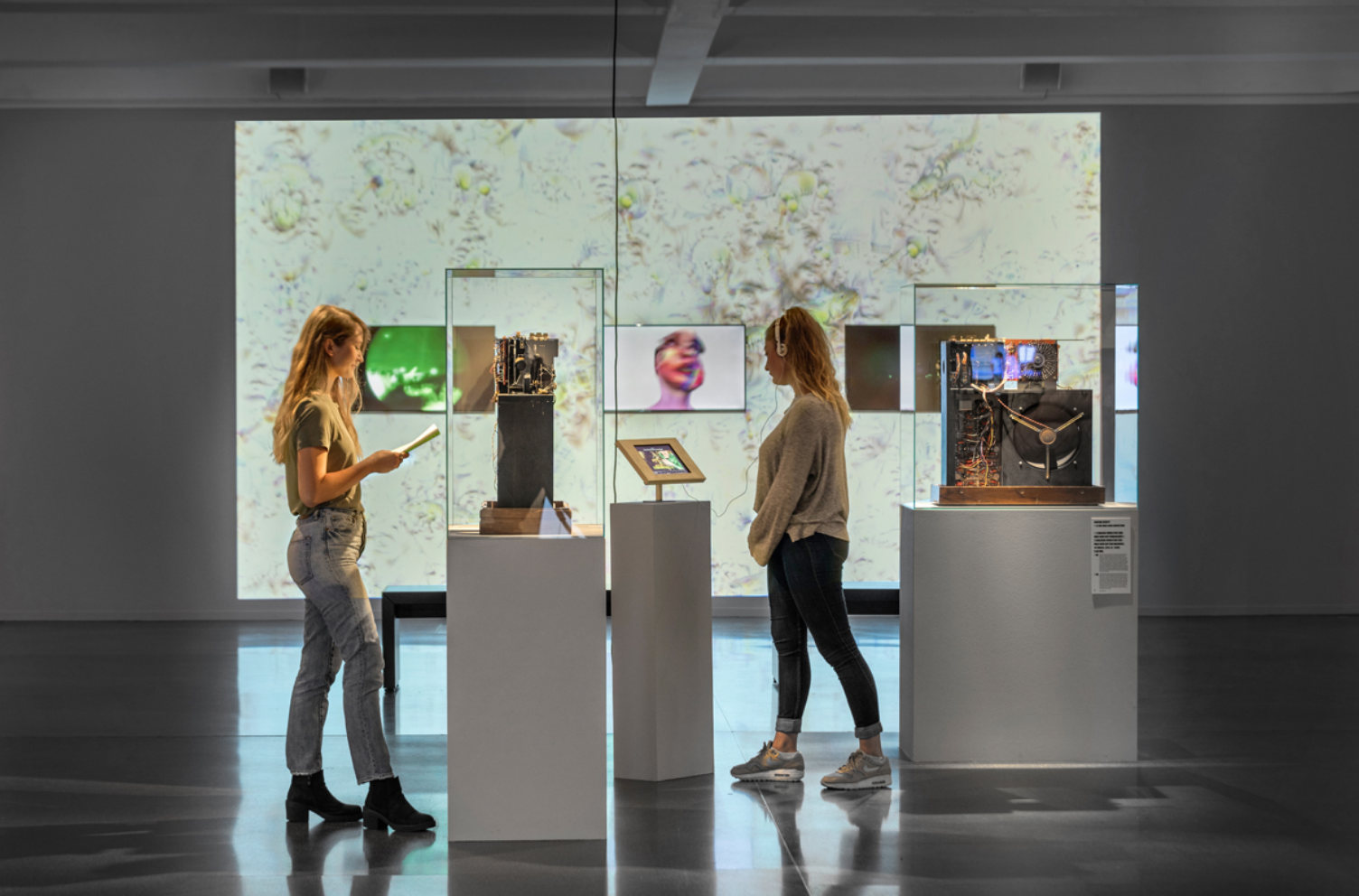 Installation view from Cmptr Grrrlz at HMKV Dortmund, 2018, HMKV.
Installation view from Cmptr Grrrlz at HMKV Dortmund, 2018, HMKV.
15. Hartware MedienKunstVerein (Dortmund, Germany)
With renowned digital art curator Inke Arns as director, the HMKV offer compelling content on the contemporary practices of new media arts. One specificity of the institution is that instead of focusing on the technology, it deeps into the concepts and multi-layered social, political, economic, and ecological conditions, making the medium a catalyst for discussion rather than an end in itself. For instance, its recent exhibition Cmptr Grrrlz (2018) ? co-organized with La Gat Lyrique ? analyzed relationships between women and technology from the first computers to current techno-feminist movements. Other notable shows include Games: Computer games by artists organized by Tilman Baumgrtel, Hans Christ and Iris Dressler in 2007, as well as (Artifical Intelligence) Digitale Demenz (2015?6), Hito Steyerl: Factory of the Sun (2016), and Afro-Tech and the Future of Re-Invention (2018).
 Barbara Flux, Car project, excavating XX centurys end, 2009. Car, single-channel video, text archives. Presented at Feedforward, LABoral, Gijon, 2009. LABoral.
Barbara Flux, Car project, excavating XX centurys end, 2009. Car, single-channel video, text archives. Presented at Feedforward, LABoral, Gijon, 2009. LABoral.
16. LABoral Center for Art and Industrial Creation (Gijon)
LABoral is a center that both exhibits media arts and supports emerging, tech-oriented artists in their work through both research and training, and specializes in creative productions around information and communication technologies. In 2007, the center hosted the critical exhibition Feedback curated by Christiane Paul, Jemima Rellie, Charlie Gere and which explored instruction-based art that is computer-generated and whereby the art form results from following a specific set of instructions via a computational interface. Subsequently, Christiane Paul co-organized Feedforward ? The Angel of History (2009) with curator Steve Dietz, this time proposing an ensemble of pieces that dwell references from the past to infer multiple possible digital futures. The center presents qualitative theme-based shows as well as multi-media installations from artists like Nicolas Bernier, Murcof & Jimmy Lakatos, and Elias Merino & Tadej Droljk. Up now is the exhibition Ctrl.+Alt.+Del. [fuerade] that investigates how stimuli from digital devices alter our biometric parameters in the physical world.
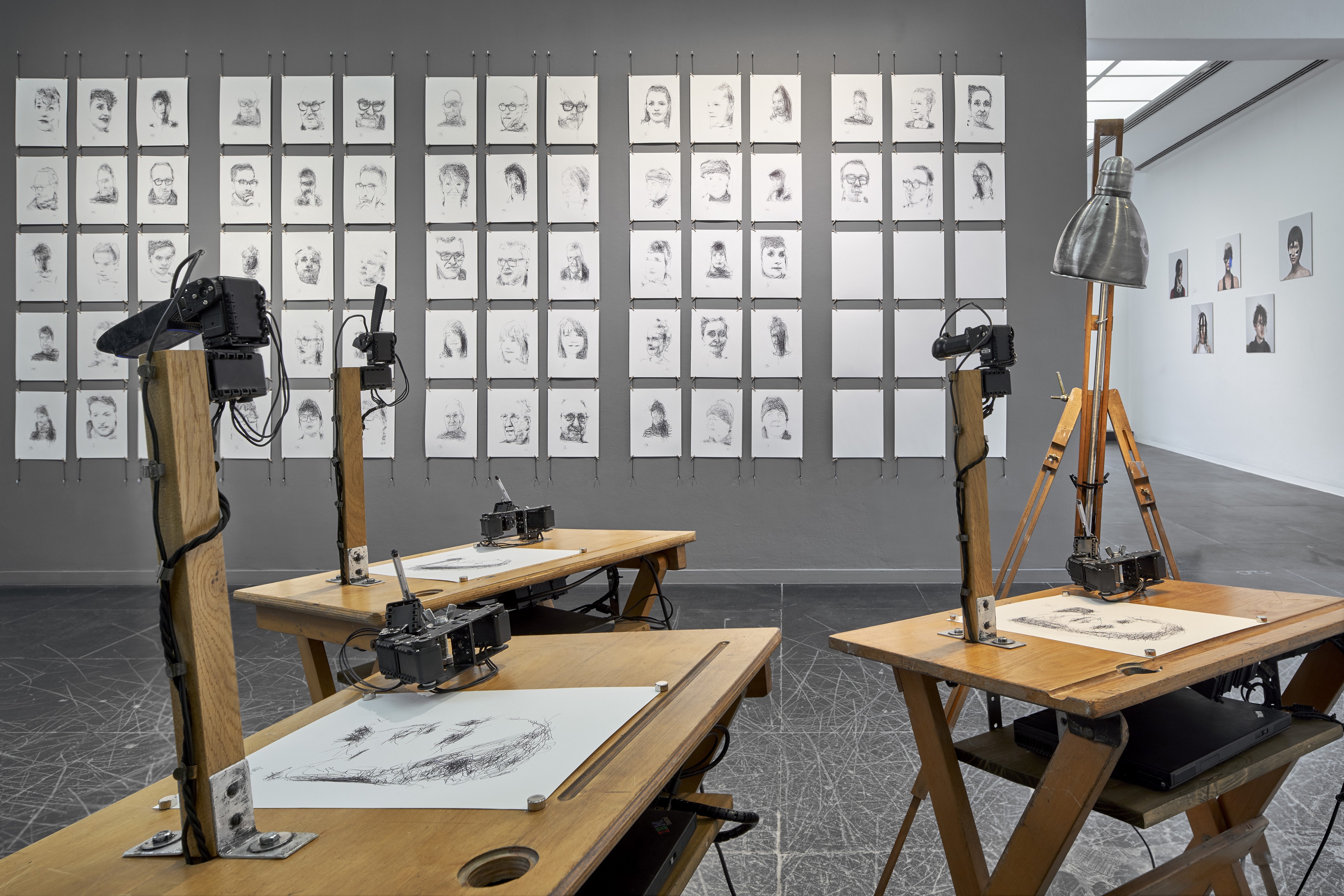 Installation view from I am here to learn: On Machinic Interpretations of the World at the Frankfurter Kunstverein, 2018, with works by Patrick Tresset and Adam Harvey, FKV and N. Miguletz.
Installation view from I am here to learn: On Machinic Interpretations of the World at the Frankfurter Kunstverein, 2018, with works by Patrick Tresset and Adam Harvey, FKV and N. Miguletz.
17. The Frankfurter Kunstverein (Frankfort, Germany)
Franziska Nori heads the Frankfurter Kunstverein since 2014, giving the museum the incentive to address current social themes and explore what the future could be. The program is tailored to the young generation of international artists and emerging talents, and has featured shows like Trevor Paglen: The Octopus (2015), Body-Me: The Body in the Age of Digital Technology (2015?6), and Perception is Reality. On the Construction of Reality and Virtual Worlds (2017?8). Most recently, I am here to learn: On Machinic Interpretations of the World brought together artists such as Zach Blas & Jemima Wyman, Heather Dewey-Hagborg & Chelsea E. Manning, Yunchul Kim, Shinseungback Kimyonghun, and Patrick Tresset to examine adaptive algorithms and artificial intelligence and how machines can learn human qualities of perception and interpretation.
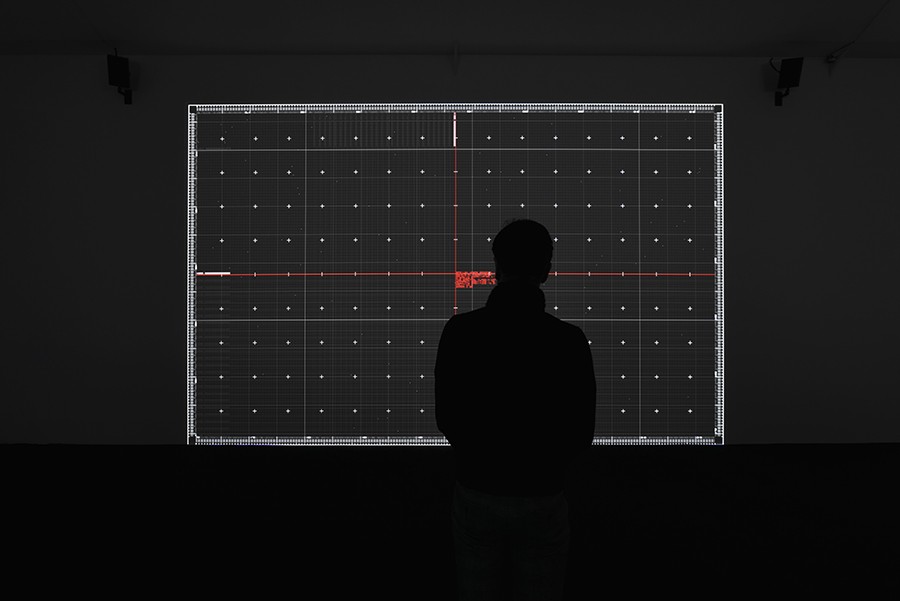 Ryoji Ikeda, data.tron [WUXGA version], 2011. On view at Entangle / Physics and the Artistic Imagination, Bildmuseet, Umea, Bildmuseet.
Ryoji Ikeda, data.tron [WUXGA version], 2011. On view at Entangle / Physics and the Artistic Imagination, Bildmuseet, Umea, Bildmuseet.
18. Bildmuseet (Umea, Sweden)
The Bildmuseet defines itself as a ?place for experiences, reflection, and discussion? where ?existential, political, and philosophical issues? are challenged. The contemporaneity of its axis on social debate perhaps explains its focus on new media, digital technologies, and science, which at least shows through in its program. After the 2017 show Perpetual Uncertainty investigating nuclear technology and radioactivity, the museum has had strong traction this year with two indispensable exhibitions. Eco-Visionaries examined alternative approaches to human beings? relationship to the environment. Entangle / Physics and the Artistic Imagination, curated by the founder of Arts at CERN Ariane Koek, looked at connections between the work of scientific researchers and that of contemporary digital-media-oriented artists and designers like Julian Charrire, Sou Fujimoto, Iris van Herpen, Solveig Settemsdal, Ryoji Ikeda, Rafael Lozano-Hemmer, Davide Quayola, and Carey Young.
The list above is not exhaustive, and many other museums have made a significant contribution in the past year which saw a real effervescence around digital technologies and new media arts. Worth noting is MAXXI for its exhibition ?Low Form. Imaginaries and Visions in the Age of Artificial Intelligence? curated by Bartolomeo Pietromarchi; the MCA Chicago for the exhibition of curator Omar Kholeif ?I Was Raised on the Internet;? the Migros Museum for its current show ?Producing Futures ? An Exhibition on Post-Cyber-Feminisms.? Amongst others, the BANFF Center for Art and Technology, the Yamaguchi Center for Arts and Media, the Edith-Russ-Haus fr Medienkunst, the Eyebeam Art + Technology Museum, the Museum of Digital Art, the Thoma Foundation, and the EDF Foundation also show continuous support to the digital art scene.
Correction notice: It has been brought to our attention that this list omits the work of Furtherfield which proposes, along with its online magazine, digital art experiences in London?s Finsbury Park. Notably, the venue recently organized the exhibition Playbour: Work, Pleasure, Survival as well as Transnationalisms curated by James Bridle.
